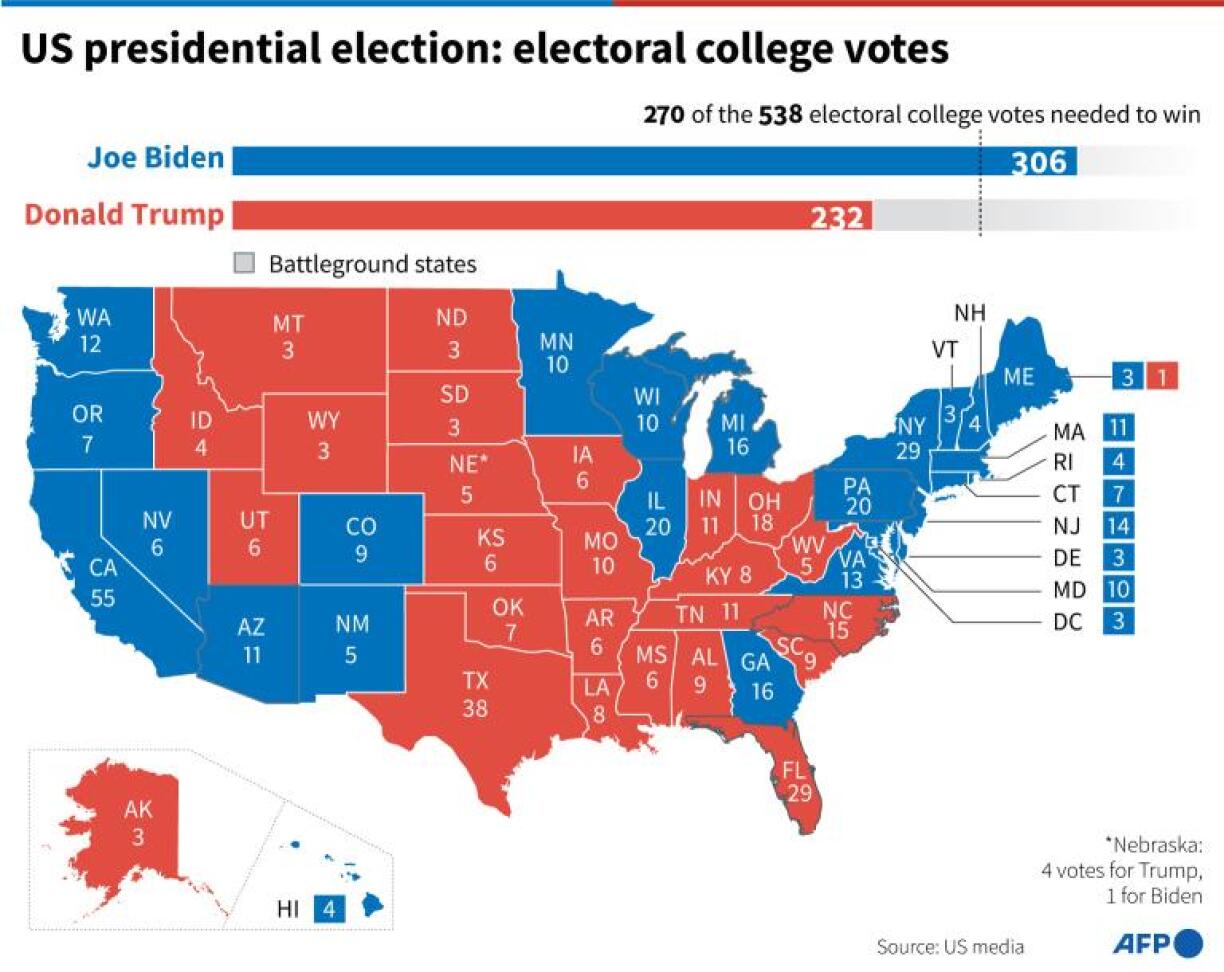
As the 2024 US presidential election approaches, it is crucial to get a better understanding of how a president is actually elected. In part two of this explainer series, we therefore delve into the complexities of the popular vote and the Electoral College system, highlighting the nuances that can shape the final outcome of the vote. Additionally, this article unpacks key aspects like battleground states, faithless electors, and the role of swing districts, providing essential insights into how these factors will influence the 2024 race.
The popular vote in a US presidential election refers to the total number of votes cast by individual citizens for the presidential and vice-presidential candidates across the country. Each eligible voter selects a candidate on election day, and these votes are tallied to reflect the overall national preference of the electorate.
While the popular vote gives a clear indication of which candidate received the most direct support from voters, its influence on the final result is still limited due to the Electoral College. The popular vote is used to determine which candidate wins each state’s electoral votes, however, a candidate can win the popular vote nationwide but still lose the presidency if they do not secure enough electoral votes.
Now on to the infamous Electoral College. This system is used to elect the US president and vice president. Each state (and Washington DC) is allocated a certain number of electoral votes based on their representation in Congress: two votes for senators and additional votes based on the number of US House representatives, which is determined by population.
There are a total of 538 electoral votes up for grabs in the present-day system, so a candidate needs a majority of 270 to win. In most states, the candidate who wins the popular vote within that state receives all of its electoral votes, which is commonly known as the ‘winner-takes-all’ system.
Once the popular votes are counted in each state, the electors cast their votes accordingly. If no candidate receives a majority of electoral votes, the election is decided by the US House of Representatives.
Electors for the Electoral College are chosen through a process that varies by state but typically follows a party-based system. Political parties in each state nominate a slate of electors, who are usually loyal members of the party, activists, or notable figures. So, when voters cast their ballots in the general election, they are technically voting for their preferred party’s slate of electors rather than directly for the presidential candidates.
The winning party’s slate of electors in each state is appointed based on the popular vote. The selected electors then meet in December after the election to formally cast their votes for president and vice president. The total number of electors from each state equals the number of its congressional representatives, making up the 538 electors in total across the country.
Unfaithful, or ‘faithless’, electors are members of the Electoral College who do not cast their electoral vote for the presidential or vice-presidential candidate to whom they are pledged. In most cases, electors are expected to vote in line with the outcome of the popular vote within their state or district, but faithless electors choose to vote for someone else, whether due to personal preference, protest, or other reasons.
Although instances of faithless electors have been rare and have not affected the outcome of a presidential election to date, they raise concerns about the integrity of the electoral process. Some states therefore have laws that either penalise faithless electors or invalidate their votes, ensuring they follow the will of the voters.

Numerous states in the US have long been strongholds of either the Democratic or the Republican Party, which means that the outcome of the election in those states can be fairly easily predicted with a reasonable degree of certainty. For this reason, most attention is usually awarded to the so-called swing states, also known as the battleground states.
These refer to states where no single political party or candidate has overwhelming support, making the outcome of the election there uncertain. These states are crucial because they can swing the overall result of the election, especially given the Electoral College system.
In swing states, voter preferences are more evenly divided between Democratic and Republican candidates, and as a result, campaigns tend to focus their attention and resources on them, especially in the immediate run-up to election day. These states therefore often experience more political ads and candidate visits. The specific states considered battlegrounds change over time depending on political trends and demographics, and winning these key states often determines the overall outcome of a presidential election.
In the 2024 race, the key battleground states are expected to include Arizona (11 votes), Georgia (16), Michigan (15), Nevada (6), North Carolina (16), Pennsylvania (19), and Wisconsin (10), with a total of 93 electoral votes there for the taking. These states are highly competitive, with neither major party having a clear advantage, making them pivotal in determining the outcome of the election. Many of these states were closely contested in the 2020 election, with several flipping between parties, reflecting their swing-state status.
Both campaigns are expected to focus heavily on these states, as their electoral votes are crucial for either candidate to reach the 270 electoral votes needed to win the presidency.
Similarly, swing districts are congressional districts where voters are nearly evenly split between Democratic and Republican candidates, making election outcomes unpredictable. These districts are crucial in determining which party controls the US House of Representatives, as they often change hands between elections. Swing districts are typically in suburban or rapidly changing areas and receive significant attention from both parties during campaigns.
